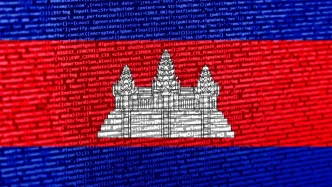In Vietnam, a growing fascination with Chinese television dramas—known as C-dramas—has turned the small screen into a vibrant bridge between two neighboring cultures. From the fantastical adventures of “Journey to the West” to modern tales of empowerment like “The Tale of Rose,” these series are not just entertainment but a window into China’s rich history and evolving society. As streaming platforms and broadcasters report soaring viewership, the phenomenon underscores a deep cultural exchange that has flourished for decades.
A Lifelong Connection to Chinese Storytelling
For many Vietnamese viewers, the love for Chinese dramas begins in childhood. Ngo Minh Quang, a 23-year-old Chinese language teacher in Hanoi, recalls being mesmerized at the age of five by “Journey to the West,” a classic adaptation of the Ming Dynasty novel. The story of a Buddhist monk and his mythical companions, including the iconic Monkey King, became more than a pastime—it was a gateway to learning. “I used the drama to practice listening and reading, as well as to improve my understanding of grammar and words” said Quang. Now, as an educator, he introduces the same series to his students, highlighting its stunning costumes and settings as a reflection of ancient Chinese values.
Quang’s story is far from unique. Vietnam, with its proximity to China and centuries of shared history, has embraced C-dramas as a cultural staple. The appeal lies not only in the visual splendor but also in the narratives that weave together mythology, history, and contemporary themes, resonating with audiences across generations.
A Booming Market for C-Dramas in Vietnam
Vietnam stands out as one of the largest Asian markets for Chinese television content. According to data from Youku, a leading Chinese streaming platform, over 1,000 hours of more than 30 dramas have been released in Vietnam in recent years. Series like “Till the End of the Moon,” a fantasy romance inspired by the aesthetic of the Dunhuang Mogao Grottoes’ murals, have topped local ratings on platforms such as VieOn. Other popular titles include the revenge-driven costume drama “The Double,” the urban romance “The First Frost,” and the gritty crime thriller “Escape from the Trilateral Slopes.”
This trend traces back to the late 1980s and early 1990s, when Vietnam became one of the first overseas markets to import Chinese content. Zhu Xinmei, director of the International Communication Research Institute at China’s National Radio and Television Administration, notes that early successes like “Kewang (Yearning),” which aired on Vietnam Television in 1993 and achieved ratings as high as 90.78 percent, laid the foundation for a dedicated fan base. Over the decades, costume dramas depicting palace life during the Qing Dynasty—such as “My Fair Princess” and “Yongzheng Dynasty”—have become particularly beloved, cementing the genre’s dominance in the Vietnamese market.
Modern Themes and Rising Stars
While historical and fantasy dramas remain popular, Vietnamese audiences are increasingly drawn to stories reflecting modern China. Series portraying the country’s rapid development, poverty alleviation efforts, and social transitions have gained traction. “The Tale of Rose,” starring A-list actress Liu Yifei, aired on Vietnam Television in September and was lauded by local media for its portrayal of women’s empowerment through the life of its protagonist, Huang Yimei. Such narratives offer a glimpse into the shifting dynamics of Chinese society, resonating with viewers who see parallels in Vietnam’s own journey of growth.
Actresses like Zhao Liying, whose fantasy romance “The Legend of Shen Li” became a hit last year, have also cultivated a strong following. Her earlier work, “The Journey of Flower,” amassed over 20 million views on Zing TV in 2015, illustrating the star power that drives viewership across Southeast Asia. Zhou Xiaoqiong, a specialist at Guangxi Television, observes that successful Chinese productions often find a ready audience in Vietnam, with upcoming releases like the animated blockbuster “Ne Zha 2” already generating buzz in local media despite not yet premiering.
A Shared Cultural Legacy
The enduring popularity of C-dramas in Vietnam is rooted in a shared cultural legacy. Zhou, who graduated with a degree in Vietnamese studies from Guangxi Minzu University, recalls how her Vietnamese friends spent childhood summers captivated by classics like “Journey to the West” and “Dream of the Red Chamber.” Now, as adults, they continue to follow contemporary series such as “Daughter of the Mountains,” finding in them a connection to both nostalgia and modernity. Guangxi Television’s “China Hour,” launched in 2018, has furthered this exchange by translating over 800 episodes of more than 20 projects into Vietnamese, ensuring accessibility for local audiences.
“Chinese films and television series have become a vital window through which Vietnamese audiences explore not only the richness of Chinese culture, but also the evolving facets of its modern society” said Zhou. This sentiment is echoed by fans and industry insiders alike, who see C-dramas as a medium that transcends borders, fostering mutual understanding through storytelling.
Looking Ahead: A Growing Cultural Bond
As streaming platforms expand and production quality rises, the influence of Chinese dramas in Vietnam shows no sign of waning. With each new series, from historical epics to contemporary sagas, Vietnamese viewers are drawn deeper into narratives that entertain, educate, and inspire. Whether it’s a teacher in Hanoi revisiting a childhood favorite or a family tuning into the latest romance, C-dramas continue to strengthen the cultural ties between two nations, one episode at a time.














